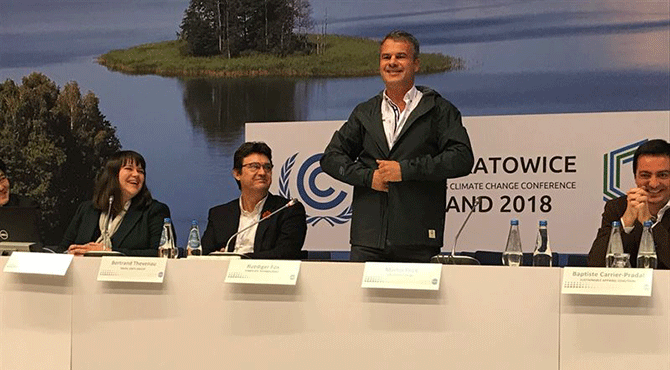COP24: Sympatex Technologies join the UN “Fashion Industry Charter for Climate Action”
Leading fashion brands, retailers, suppliers, member organizations and NGOs made joint commitment at United Nations to follow and implement 16 goals for tackling climate change.

The fashion industry is a major source of pollution
The stated goal is to continuously reduce harmful greenhouse gases along the entire textile value chain and achieve net zero emissions by 2050. As a first step, the signatories agreed to a 30 percent reduction by 2030. Plans are in place to define specific individual measures and create a working group.Apart from Sympatex, the signatories include Puma SE, Adidas, Mammut Sports Group AG, Hugo Boss, H&M Group, Schoeller Textiles AG, Pidigi S.P.A. and fashion designer Stella McCartney, in addition to key NGOs involved in the promotion of sustainability in the textile industry such as the Sustainable Apparel Coalition (SAC), Textile Exchange and ZDHC (Zero Discharge of Hazardous Chemicals).- London Fashion Week showcases Capital as global mobility centre
- ASOS shrugs off Brexit with London HQ expansion
- As UN climate change talks take place in Poland youth from around the world show leadership
In addition to the reduction goals, the charter includes individual measures and concrete recommendations for action. These include the selection of climate-friendly materials as early as the design process, monitoring and reporting on the effects of raw materials on the climate, disclosure of the preferred raw materials and respective energy sources, as well as the goal of being able to return the materials to a value-retaining circular economy after they are used.Data from the SAC HIGG Index clearly shows that the better part of the harmful greenhouse gases cannot be reduced through the often necessary transport of the textiles around the globe, rather through the careful selection of the materials.
Sympatex produce a fuctional jacket with half the pollution
In the case of functional textiles for instance, merely relying on Sympatex polyester membranes instead of still-popular PTFE membranes can reduce total CO2 emissions by more than 50 percent during the production of a functional jacket. With gloves, the number can even exceed 60 percent and with functional shoes up to 15 percent.“The charter is obviously open to additional members. Commitments from additional industry participants increase our chances of making a mutual impact in order to reach the goal of driving down global warming to under 2 degrees as outlined in the Paris Climate Accord,” explains Dr. Rüdiger Fox.“Katowice proves that our industry is ready to take significant steps and is willing to make urgently-required changes to the current mindset. More and more brands are beginning to understand that instead of viewing sustainability as a threat, or purely as a responsibility to society and the environment, it offers an economic opportunity for the companies of tomorrow,” says Fox who adds, “Green is the new blue ocean.”©2025 Re:locate magazine, published by Profile Locations, Spray Hill, Hastings Road, Lamberhurst, Kent TN3 8JB. All rights reserved. This publication (or any part thereof) may not be reproduced in any form without the prior written permission of Profile Locations. Profile Locations accepts no liability for the accuracy of the contents or any opinions expressed herein.






































